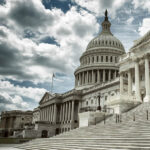On Tuesday evening, President Trump announced a trade deal with Japan via a post on his Truth Social feed. The post specified that the deal would include lowered tariff rates on Japanese autos and a blanket “reciprocal” tariff rate of 15%, lower than the 25% threatened in a letter sent to Japan earlier this month.
In exchange, the White House stated that Japan would deliver a $550 billion package of investments and loans, as well as purchasing 100 Boeing planes and increasing defense spending with U.S. companies from $14 billion to $17 billion.
In addition to lowering the blanket tariff rate on Japanese goods that was due to take effect on August 1st from 25% to 15%, the deal gives the Japanese auto industry a comparative advantage—as cars and automotive parts from most other countries continue to be subject to a 25% tariff rate. U.S. Treasury Secretary Scott Bessent stated that this lower rate on autos was due to the country’s offer of an “innovative financing mechanism” that he did not expect other countries to replicate. White House officials also stated that Japan has committed to purchasing increased U.S. agricultural products including rice.
President Trump also announced that he had agreed to a deal with the Philippines under which goods from the Southeast Asian country would be subject to 19% tariffs, after meeting with the country’s president Ferdinand Marcos Jr. at the White House on Tuesday. The 19% rate is 1% lower than both the rate specified in the tariff letter the country received earlier this month, and the 20% tariff rate imposed on nearby Vietnam. The President did not disclose additional terms of the deal.
White House Issues Fact Sheet on Indonesia Deal
The White House also announced some additional terms of a trade deal with Indonesia—initially announced earlier this month—under which the country would also be subject to a 19% tariff rate. The press release specified that Indonesia will eliminate tariffs on 99% of U.S. goods and will address a range of “non-tariff barriers” for U.S. agricultural and industrial exports.
The White House also stated that the countries would continue to negotiate on a range of topics, including establishing rules of origin that “ensure that the benefits from the agreement accrue to the United States and Indonesia, not third-countries.” While details remain sparse, reports have surfaced indicating that the agreement will include “facilitative rules of origin” to provide that goods with a certain percentage of inputs from non-market economies will be subject to a 40 percent tariff rate for “transshipped goods.” This expanded concept of “transshipping” first emerged in the President’s announcement about the Vietnam trade deal, and it appears to be taking greater shape, though the prospect of yet another form of origin rules threatens to further complicate the sourcing landscape for U.S. businesses.
The administration is concerned that non-market economies fueling overcapacity and overproduction are exporting components to third countries that then use those non-market inputs. “Maybe there’s a high level of content, maybe 50 percent input from a non-market economy,” the official said.
The agreement would also reportedly remove barriers on digital trade. In particular, the White House stated that Indonesia had committed to eliminating HTS tariff lines on “intangible products,” support a “permanent moratorium” on customs duties on electronic transmissions at the WTO, and to recognize the U.S. as a “country or jurisdiction that provides adequate data protection under Indonesia’s law.”
The White House fact sheet also indicated that Indonesia had committed to joining the Global Forum on Steel Excess Capacity, and to take steps to improve labor standards—including adopting a forced labor import ban and removing provisions restricting collective bargaining rights.

